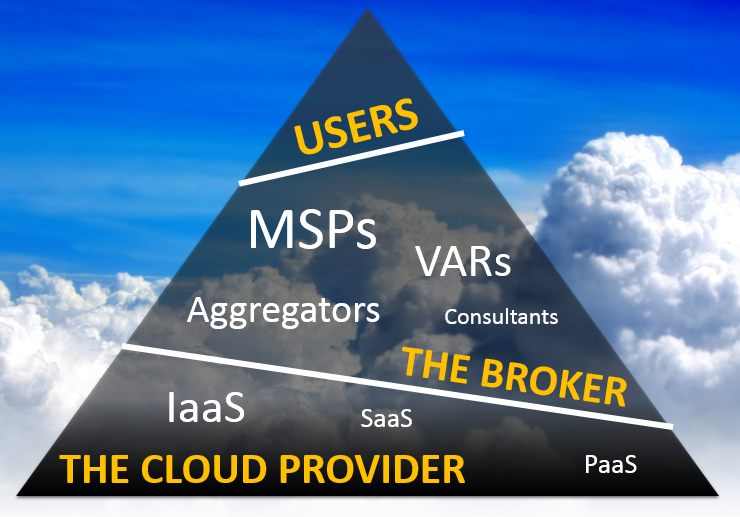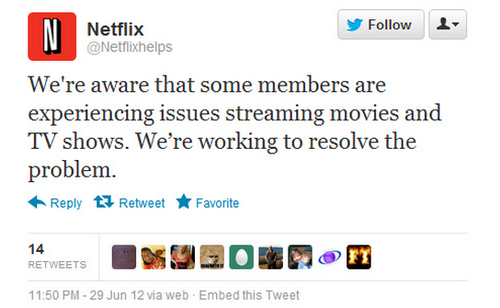Cloud-Agnostic: Friend or Foe?
By Maish Saidel-Keesing I have been working on a project for a while that includes the deployment of a large number of moving parts that are in a significant state…
By Maish Saidel-Keesing I have been working on a project for a while that includes the deployment of a large number of moving parts that are in a significant state…
 [GUEST POST] I started exploring the cloud computing world around 5 years ago, and I must admit that my initial understanding of the cloud was a disaster. At first, it was difficult to find a comprehensive definition, but I finally settled on one from the National Institute of Standards & Technology (NIST). It clearly defined the cloud’s attributes and models, and removed my doubts regarding what falls under the cloud umbrella. The experience that I had finding this definition made me realize that I wanted there to be an easier way for others to find it, as well. Therefore, I decided to create my own list of cloud guidelines. This was a turning point in my cloud journey, as it pushed me to teach many students and IT professionals about cloud computing.
[GUEST POST] I started exploring the cloud computing world around 5 years ago, and I must admit that my initial understanding of the cloud was a disaster. At first, it was difficult to find a comprehensive definition, but I finally settled on one from the National Institute of Standards & Technology (NIST). It clearly defined the cloud’s attributes and models, and removed my doubts regarding what falls under the cloud umbrella. The experience that I had finding this definition made me realize that I wanted there to be an easier way for others to find it, as well. Therefore, I decided to create my own list of cloud guidelines. This was a turning point in my cloud journey, as it pushed me to teach many students and IT professionals about cloud computing.
Stumbling upon AWS is inevitable when discovering the cloud, and just as with the cloud, my first interaction with AWS was not simple, either. I remember the moment of “Eureka!” that came after I was finally able to launch an EC2 instance and deploy a simple application. Sometimes, I laugh at the sheer joy I experienced from such a small achievement, but I realize that this was a stepping stone in my AWS journey and my love for Amazon. I am now able to manage bigger AWS cloud infrastructures, and I’ve consulted for and successfully designed various Amazon projects. I’ve conducted sessions on how to scale applications and how to make scalable applications using Amazon.
I see that two things have remained steady over the past few years: continuous innovations at AWS and my love for AWS. AWS has always kept me motivated to learn new things with its consistent new offerings, and I’d like to share the reasons that I believe make it the immense influence on the cloud that it is today.
(more…)
 [Guest Post by Uri Wolloch, Co-Founder and CTO at N2Ws]
[Guest Post by Uri Wolloch, Co-Founder and CTO at N2Ws]
This article discusses the recent change that has taken place with AWS EC2 virtualization options. We will look into AWS’ virtualization backend and what it means for AWS users in general and N2WS, in particular. For a bit of background, up until recently, the AWS cloud supported a virtualization type called Hardware Virtual Machine (HVM) for Windows instances as well as ParaVirtualization (PV) for Linux instances. While these are both Xen technologies, they are slightly different. PV requires an added layer of software (i.e. kernel) between the designated hardware and virtual machines, and HVM runs directly on hardware and can make use of special hardware extensions.
 2014 has been a pivotal year in the enterprise tech world. Enterprise IT has begun to fully understand the cloud, and the development of a mutual understanding has grown. The cloud is, in turn, adjusting more and more to the features and traditional needs of enterprise IT.
2014 has been a pivotal year in the enterprise tech world. Enterprise IT has begun to fully understand the cloud, and the development of a mutual understanding has grown. The cloud is, in turn, adjusting more and more to the features and traditional needs of enterprise IT.
My perspective on next year is guided mostly by experiences I had this year (2014) at the AWS re:Invent conference. This huge cloud festival was the platform from which AWS publicly introduced the cloud as a means for creating today’s enterprise data center. Whether for native cloud web-scale applications or for enterprises of all shapes and sizes, the cloud is considered to be today’s best way to increase efficiency as well as flexibility in any IT environment. It is important to note that market saturation is still not here, however it’s just a matter of time until the cloud is used by everyone, covering a significant portion of the world of IT.
 The AWS re:Invent floor this year was much more vibrant than last year. It included remarkable cloud products’ promotions made by the 189 conference sponsors, some of which only began their ventures one year ago. Naturally, the ‘experienced’ vendors made themselves known, with more lavish displays and a larger staff headcount, but that is to be expected.
The AWS re:Invent floor this year was much more vibrant than last year. It included remarkable cloud products’ promotions made by the 189 conference sponsors, some of which only began their ventures one year ago. Naturally, the ‘experienced’ vendors made themselves known, with more lavish displays and a larger staff headcount, but that is to be expected.
(more…)
In this post series, I will raise some basic questions and will delve deeply into this topic to debate the common resistance to what I call “pure cloud deployment”.
Let’s begin with a leading question: Can’t the hybrid economy model live within the public cloud? From the enormous number of conversations with top cloud thought leaders, CIOs, startups, and the like, it seems that the answer is YES.

(more…)
 The cloud market is young, despite AWS’ growth and current worth of a few billion dollars. Most of the enterprise’s IT resources are still hosted on the organizational premise of using VMware hypervisor. The enterprise hybrid cloud challenge is hidden in the cloud utility model’s basic notion of hardware as software, whereas legacy application performance and usages are still based on physical resources capabilities. This difference is the greatest factor when it comes to discussing the evolution pace of the `enterprise grade cloud`. The CIO today is required to show cloud adoption and IT operations’ efficiency. This is consequentially triggering new startups to evolve in efforts to facilitate IT resources to close this existing gap. What follows is a story of such a startup that, in my opinion, has a real chance at becoming a leader in this intermediary cloud adoption phase and the hybrid cloud ultimate enabler, Ravello Systems.
The cloud market is young, despite AWS’ growth and current worth of a few billion dollars. Most of the enterprise’s IT resources are still hosted on the organizational premise of using VMware hypervisor. The enterprise hybrid cloud challenge is hidden in the cloud utility model’s basic notion of hardware as software, whereas legacy application performance and usages are still based on physical resources capabilities. This difference is the greatest factor when it comes to discussing the evolution pace of the `enterprise grade cloud`. The CIO today is required to show cloud adoption and IT operations’ efficiency. This is consequentially triggering new startups to evolve in efforts to facilitate IT resources to close this existing gap. What follows is a story of such a startup that, in my opinion, has a real chance at becoming a leader in this intermediary cloud adoption phase and the hybrid cloud ultimate enabler, Ravello Systems.
 Cloud brokers were recognized and described by Gartner analysts as the `Intermediary services that support fast cloud adoption`. From their customers’ perspectives cloud brokers are the system integrators (SI) or the `cloud enablers` that support fast adoption and maintenance of cloud technologies. For example, the independent software vendor (ISV) can benefit greatly from a cloud managed service provider (MSP) starting with integrating into the underlying cloud infrastructure, all the way up to the offering stack wrappers, such as service provisioning methodologies’ implementation. From the cloud provider’s perspective, cloud brokers are key customers, value-added resellers and aggregators of its cloud services.
Cloud brokers were recognized and described by Gartner analysts as the `Intermediary services that support fast cloud adoption`. From their customers’ perspectives cloud brokers are the system integrators (SI) or the `cloud enablers` that support fast adoption and maintenance of cloud technologies. For example, the independent software vendor (ISV) can benefit greatly from a cloud managed service provider (MSP) starting with integrating into the underlying cloud infrastructure, all the way up to the offering stack wrappers, such as service provisioning methodologies’ implementation. From the cloud provider’s perspective, cloud brokers are key customers, value-added resellers and aggregators of its cloud services.
In this article, I cover the perceptions, evolution and future of cloud brokerage in great detail.
(more…)
 Following several discussions with fellow bloggers and industry executives, I found it quite fitting that the natural cloud leaders are the top software and web giants: Google, Microsoft and Amazon. While Amazon’s AWS is The public cloud today Google recently reported that it is doubling its office space near Seattle, just miles from the campuses of Amazon and Microsoft, in order to expand its cloud technology team and engineers. Over two years prior to these Google’s expansion news, Microsoft reported that 90% of its R&D investment was earmarked for cloud technology. Last month they finally announced that Windows Azure Cloud Services now support auto-scaling. For these reasons and more, the following points will strengthen the trivial perception that cloud technologies should and will prosper in the hands of this software giant trio.
Following several discussions with fellow bloggers and industry executives, I found it quite fitting that the natural cloud leaders are the top software and web giants: Google, Microsoft and Amazon. While Amazon’s AWS is The public cloud today Google recently reported that it is doubling its office space near Seattle, just miles from the campuses of Amazon and Microsoft, in order to expand its cloud technology team and engineers. Over two years prior to these Google’s expansion news, Microsoft reported that 90% of its R&D investment was earmarked for cloud technology. Last month they finally announced that Windows Azure Cloud Services now support auto-scaling. For these reasons and more, the following points will strengthen the trivial perception that cloud technologies should and will prosper in the hands of this software giant trio.
(more…)

A while back, I was starting up an EC2 instance on the AWS cloud when it entered an endless restart loop. All the application deployment efforts we’d made (installation and service configuration) over two weeks just went down the drain. So we called support. The support rep redirected us to his team leader who simply told us that, as indicated in the SLA, we had to abide by the shared responsibility model and they were not liable for our loss.
(more…)